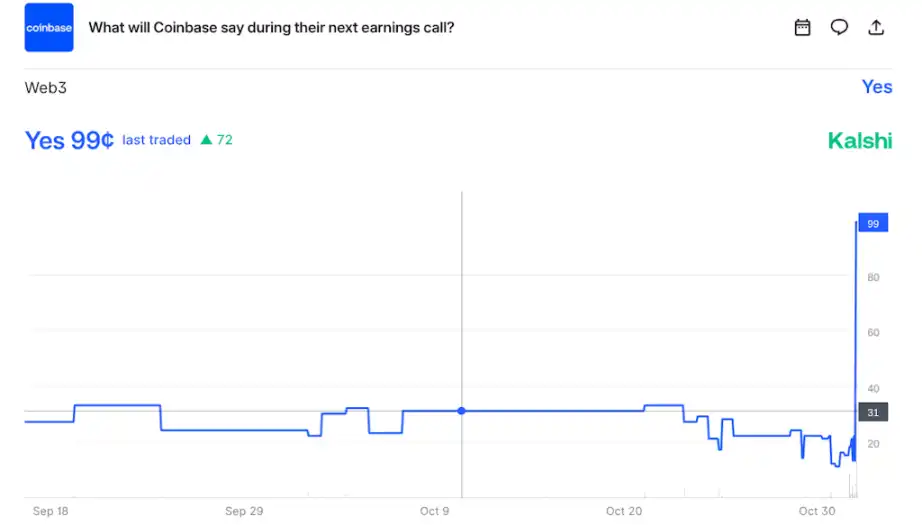Original Title: Busting the myth of efficient markets
Original Author: Byron Gilliam, Blockworks
Original Translation: AididiaoJP, Foresight News
How do financial markets shape the reality they are supposed to measure?
There is a world of difference between "knowing" rationally and "understanding" through personal experience. It's like the difference between reading a physics textbook and watching MythBusters blow up a water heater.
The textbook will tell you: heating water in a closed system will create hydraulic pressure due to the expansion of the water.
You understand the words and grasp the theory of phase change physics.
But MythBusters shows how pressure can turn a water heater into a rocket, shooting it 500 feet into the air.
You truly understand what a catastrophic steam explosion is only after watching the video.
Demonstration is often more powerful than narration.
Last week, Brian Armstrong provided us with a live demonstration of George Soros's "reflexivity theory," an effect that would make the MythBusters team proud.
During Coinbase's earnings call, after answering analysts' questions, Brian Armstrong read out a string of additional words. These were the words that players in the prediction markets had bet he might say.
At the end of the call, he said, "I've been watching the prediction market bets on our earnings call. Now, I just want to add a few words: Bitcoin, Ethereum, blockchain, staking, and Web3."

In my view, this vividly demonstrates how most financial markets operate, as George Soros's theory suggests: market prices influence the value of the assets they are pricing.
Before becoming a billionaire hedge fund manager, Soros aspired to be a philosopher. He attributed his success to discovering a flaw in the "efficient market theory": "Market prices always distort the fundamentals."
Financial markets do not merely passively reflect the fundamentals of assets as traditionally perceived; they actively shape the reality they are supposed to measure.
Soros cited the example of the conglomerate boom in the 1960s: investors believed these companies could create value by acquiring small, niche companies, thus driving up their stock prices, which in turn allowed these conglomerates to actually acquire those companies at inflated prices, thereby "realizing" value.
In short, this created a "sustained and circular" feedback loop: participants' thoughts influenced the events they bet on, and those events, in turn, influenced their thoughts.
In today's context, Soros might cite companies like MicroStrategy as an example. Its CEO, Michael Saylor, is selling investors on this very circular logic: you should value MicroStrategy's stock at a premium above its net asset value because the premium state itself makes its stock more valuable.
Soros wrote in 2009 that he used reflexivity theory to analyze the fundamental cause of the financial crisis as a basic misjudgment, namely the belief that "the value of (real estate) collateral is unrelated to the availability of credit."
The mainstream view holds that banks simply overestimated the value of real estate as loan collateral, while investors paid excessively high prices for these loan-backed derivatives.
Sometimes this is indeed the case, a simple mispricing of assets.
But Soros believed that the enormous scale of the 2008 financial crisis must be explained by "feedback loops": investors buying credit products at high prices pushed up the value of the underlying collateral (real estate). "When credit becomes cheaper and more accessible, economic activity heats up, and real estate values rise."
And the rising real estate values, in turn, encouraged credit investors to pay even higher prices.
In theory, the prices of credit derivatives like CDOs should reflect real estate values. But in reality, they also help create those values.
This is at least the textbook explanation of Soros's theory of financial reflexivity.
But Brian Armstrong did not just explain; he demonstrated it live, in the style of MythBusters.
By stating the words people bet he would say, he proved that participants' views (prediction markets) can directly shape outcomes (what he actually said), which is precisely what Soros meant by "market prices distort the fundamentals."
The current artificial intelligence bubble is a trillion-dollar upgrade of Brian Armstrong's experiment, allowing us to grasp this principle in real time: people believe AGI will be achieved, so they invest in OpenAI, Nvidia, data centers, etc. These investments make AGI more likely to become a reality, which in turn attracts more investment in OpenAI…
This perfectly illustrates Soros's famous assertion about bubbles: he buys in because buying drives up prices, and higher prices improve the fundamentals, which attracts more buyers.
But Soros also warns investors not to be overly reliant on this self-fulfilling prophecy. Because in extreme cases of bubbles, the speed at which investors drive up prices can far exceed the speed at which prices can improve the fundamentals.
Soros reflected on the financial crisis, writing: "A fully operational positive feedback process is self-reinforcing in its early stages, but ultimately it must reach a peak or reversal point, after which it will self-reinforce in the opposite direction."
In other words, trees do not grow to the sky, and bubbles do not expand forever.
Unfortunately, there has yet to be a MythBusters-style experiment to demonstrate this.
But at least we now know that market prices can bring things to fruition, just like the few words spoken during an earnings call.
So, why wouldn't AGI (Artificial General Intelligence) be the same?
免责声明:本文章仅代表作者个人观点,不代表本平台的立场和观点。本文章仅供信息分享,不构成对任何人的任何投资建议。用户与作者之间的任何争议,与本平台无关。如网页中刊载的文章或图片涉及侵权,请提供相关的权利证明和身份证明发送邮件到support@aicoin.com,本平台相关工作人员将会进行核查。



